It’s a common misconception that life insurance is only something you need when you get older. But the truth is, having life insurance can be valuable at any age, even when you’re still young and healthy.
If you were to unexpectedly pass away, life insurance ensures that your loved ones are financially supported and are able to continue their current standard of living without your income.
If you assume that life insurance is expensive (maybe even too expensive for you), you’re not alone. Data shows that more than 50% of Americans think the cost of term life insurance is more than three times higher than it actually is. Young adults in particular often overestimate the cost to be as much as five times higher than the true cost.
Life insurance premiums are not fixed — they are unique to each individual. The cost of your policy depends on a variety of personal factors that are based on your circumstances. However, seeing average premiums can help you gauge how much you might pay for life insurance.
Factors that Impact Life Insurance Rates
When you apply for a life insurance policy, the insurance company will ask you various questions on the application. These are used to determine your premium but it’s a little more complicated than that.
Although it sounds morbid, your life insurance premium is based on how likely you are to pass away, based on criteria like your age and overall health. Life insurance carriers use mortality tables that can help predict this, given the personal information you provide on your application.
To better measure your overall health, many life insurance companies require you to complete an in-person medical exam. During the exam, which is like an annual check-up at the doctor, a physician from the life insurance company will take your vitals, ask you about your personal and family medical history, and learn more about your hobbies and lifestyle.
The results from your application and medical exam are used by the underwriter to determine your premium, and how much coverage you are eligible for. Here are some of the biggest factors that will contribute to your life insurance premium:
- Gender.
- Age.
- Pre-existing health conditions.
- Alcohol and tobacco use.
- Immediate family’s medical history.
- Occupation.
- Hobbies.
Applicants who have the lowest mortality risk (usually people who are young and in good health) can expect to pay the lowest life insurance premiums. From a life insurance company’s perspective, having a low mortality risk means they probably won’t have to pay out a death benefit anytime soon. Therefore, they can afford to have you pay a lower premium.
On the other hand, if the life insurance company determines that you could pass away prematurely, it means they might have to pay out a claim sooner. To offset that potential risk (and the cost associated with it), you get charged a higher premium. After all, life insurance companies are businesses. Every time they pay out a claim, it’s money that comes out of their pocket.
Read more: Life Insurance: Is it Worth it and When do You Need it?
How Much Does Life Insurance Cost Based on Age?
As a generalization, the older a person is, the greater chance they have of passing away. That’s why life insurance premiums get more expensive as you get older, assuming all other factors remain constant. One of the biggest benefits of getting life insurance while you are young is the ability to lock in a lower premium.
Although life insurance premiums are unique to each individual, you can find average annual rates to determine how much you might pay, based on your age, tobacco use, and the amount of coverage you want.
In the table below, you can see average annual rates from Ethos for a 10-year term life insurance policy with $1 million in coverage. These sample rates reflect average premiums for both males and females:
| Age | Annual premium (non-smoker) | Annual premium (smoker) |
|---|---|---|
| 25 | $58 | $123 |
| 35 | $65 | $137 |
| 45 | $135 | $332 |
| 55 | $316 | $982 |
| 65 | $790 | $2,540 |
As you can see, average annual life insurance premiums are less expensive for young people and more expensive for older people. For smokers, the cost of life insurance is typically double what it costs for non-smokers.
Another thing to consider is that these rates are for term life insurance, which is often less expensive for young people than permanent life insurance policies. If you want to get a permanent policy that provides lifetime protection, such as whole life insurance, you will probably pay a higher premium.
If you’re not sure what type of life insurance is right for you, you can check out our guide to term life insurance vs. whole life insurance.
How to Get a Cheaper Life Insurance Premium
You won’t know exactly how much your life insurance premium will cost until you apply for a policy. But if you find that you’re getting very expensive rate quotes, there are a few ways you can lower your rate.
Although lowering your life insurance premium is possible, it’s not as easy as getting cheaper car insurance or renters insurance, for example. Life insurance companies usually don’t offer discounts, so saving money often involves making lifestyle changes.
Here are a few tips for getting a cheaper life insurance premium:
Buy coverage while you are young
Although we’ve mentioned this a few times, it’s worth repeating — buying life insurance while you’re young can help you save money.
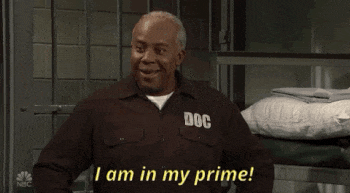
Source: Giphy.com
Even if you aren’t in perfect health or work in a high-risk profession, you will probably still pay less for life insurance if you get a policy before you turn 40.
And if you choose a term life insurance policy, your premiums will be fixed for the duration of the term. So, for example, if you buy a 30-year term policy at age 30, your premium will stay the same until you turn 60.
Maintain your health
Ultimately, the most effective way to get a lower life insurance premium is to make sure you are in the best health possible.

Source: Giphy.com
If you’re a smoker and can stop smoking, you could see significant savings on your policy. Maintaining a healthy weight, blood pressure and cholesterol should help you qualify for the best rates, too.
If you have pre-existing conditions, make sure you are working with a physician to manage them. That can also help you avoid developing additional disorders down the line that could impact your life insurance cost.
Limit risky hobbies and activities
When you apply for life insurance, the insurance company will ask questions about your hobbies.

Source: Tenor.com
For example, if you enjoy skydiving or scuba diving on the weekends, you can expect to pay a much higher life insurance premium.
The same goes for high-risk professions. If you are a construction worker, window washer or roofer, you might end up paying more for life insurance.
Read more: 8 Things that Will Get you Denied Life Insurance Coverage
Choose riders wisely
Most life insurance companies sell riders, which are endorsements that can be added to your policy for extra protection and tailored coverage.
For example, many insurance carriers offer a terminal illness rider, which allows you to use money from your death benefit if you get diagnosed with a terminal condition and have months to live.
However, most life insurance riders cost extra. It can be tempting to add all the riders available for the most protection, but that could cause your premium to skyrocket. Choosing your riders carefully can keep your premium low.
Where to Buy Affordable Life Insurance
Many life insurance companies provide online quotes for term life insurance, which can make it easy to compare rates and find the cheapest policy. If you are shopping for life insurance for the first time, we recommend getting quotes from Ladder and Policygenius, which are both very user-friendly and provide instant price estimates based on a few questions.
But before you start applying for policies, it’s a good idea to figure out how much coverage you may need. To make it easier, you can use our free life insurance coverage calculator to estimate how much coverage will be sufficient for your family’s needs.
Here’s a quick look at some of our favorite places to get affordable life insurance:
Policygenius

Policygenius is an online marketplace where you can get multiple life insurance quotes from a single application.
Based on your questionnaire responses, Policygenius matches you with a few life insurance providers that will fit your needs. Some of the life insurance companies in Policygenius’ network include Prudential, Pacific Life, Transamerica, and AIG.
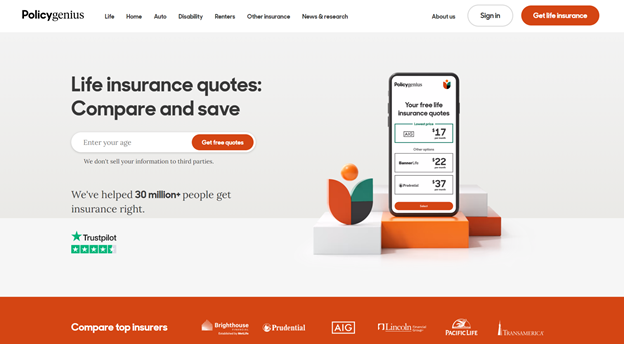
Source: Policygenius, screenshot by Elizabeth Rivelli
Depending on the providers you get matched with, you can purchase a variety of different policies, including term life insurance, level term life insurance, return of premium life insurance, no medical exam life insurance, and whole life insurance. Policygenius can also recommend a policy type that is best for you, based on your situation.
Getting a life insurance quote from Policygenius is quick and easy. The company takes a three-step approach to life insurance quotes:
- Step one: You calculate the amount of life insurance you’ll need using Policygenius’ life insurance calculator.
- Step two: Compare multiple life insurance companies’ quotes, usually more than a dozen, side-by-side so you can find the most affordable quote that meets your needs.
- Step three: Apply for the life insurance policy from the company or companies you’ve chosen.
If you run into any questions or problems while getting a quote or filling out the life insurance application, you have access to Policygenius’ experts every step of the way.
See details or read our full Policygenius review.
Bestow

If you need to get life insurance quickly, and don’t want to deal with a long waiting period, Bestow is another great option.
Bestow offers no-medical-exam life insurance and instant approvals. All you have to do is provide some basic information and Bestow takes it from there, using big data to issue a quote.
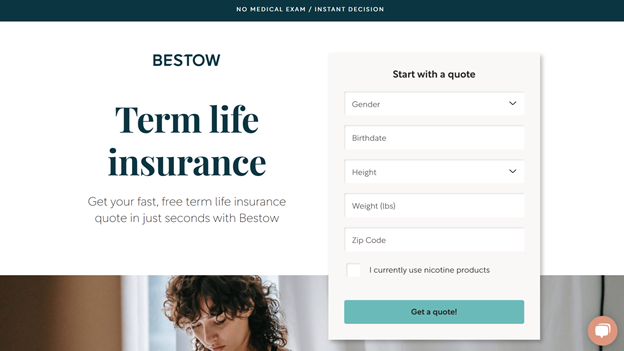
Source: Bestow, screenshot by Elizabeth Rivelli
Bestow issues life insurance policies through the North American Company for Life and Health Insurance, a highly rated provider, so you’ll know you’re getting coverage you can count on. However, keep in mind that Bestow only issues term life insurance policies, so if you want permanent coverage, you’ll need to look elsewhere.
See details/apply or read our full Bestow review.
Ladder
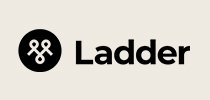
Ladder offers affordable term life insurance that’s easy to understand and quick to set up online. In fact, the company advertises term life policies starting at just $5 per month.
It only takes a few minutes to apply for coverage and you can get an instant decision.
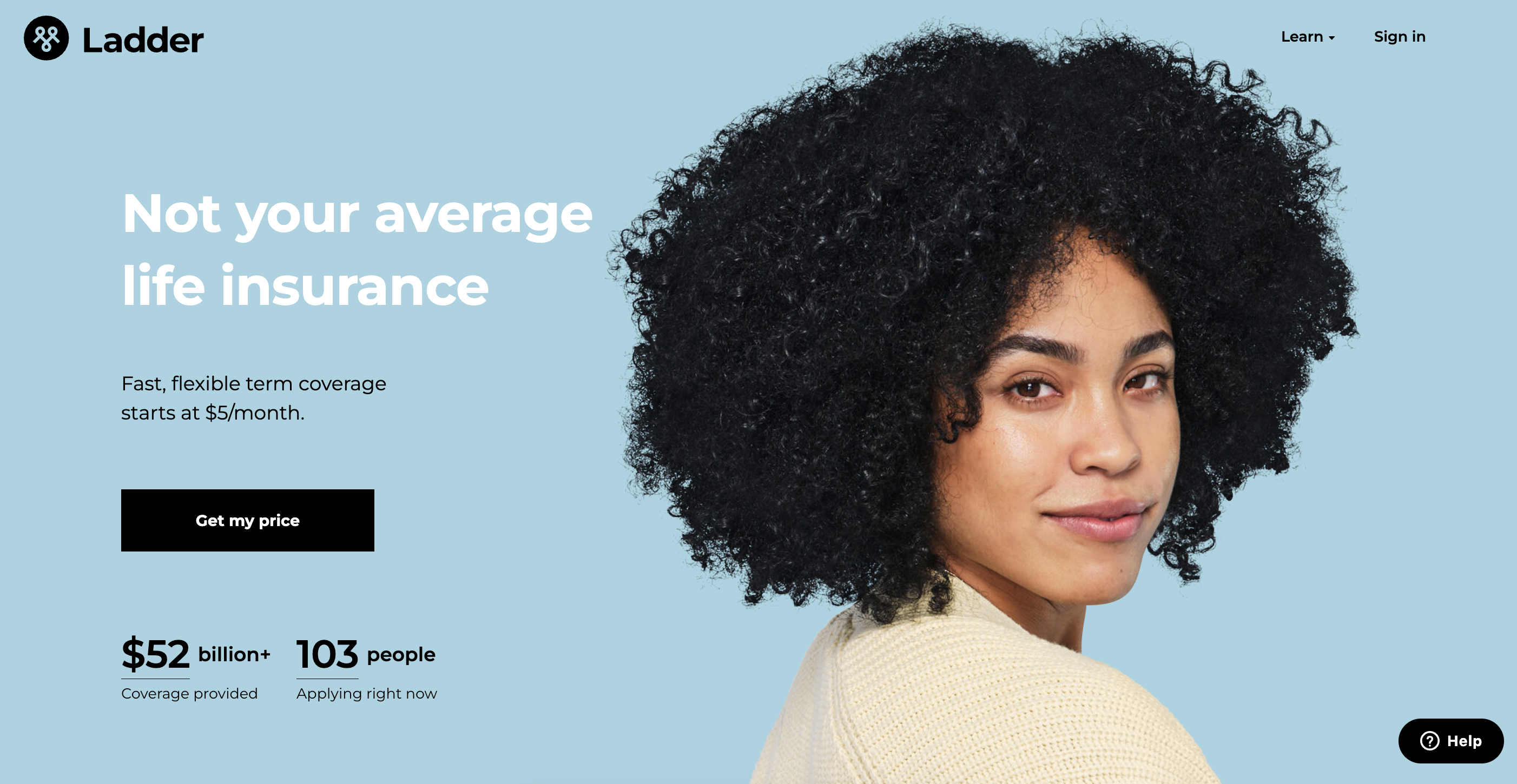
Source: Ladder
One of the most impressive things about Ladder is that you can get access to high coverage limits. The company offers term life policies with coverage ranging from $100,000 to $8 million, for people between the ages of 20 and 60. If you’re applying for $3 million in coverage or less, a medical exam isn’t required. You’ll just need to answer some health-related questions as part of the online application.
See details/apply or read our full Ladder review.
Summary
If you’re thinking about getting life insurance, it’s best to apply as soon as possible. Life insurance policies are almost always cheaper the younger you are. Purchasing a policy early can also help you lock in a lower rate overtime, if you opt for term life insurance.
Also, remember that it’s never too late to improve your health or make other lifestyle changes that could help you get a cheaper premium. If you stop smoking, take a less risky job, or get off a prescription medication, you may be able to get a new policy and cancel your old one to get a better rate.
Featured image: fizkes/Shutterstock.com


